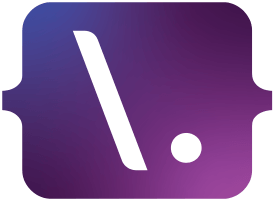
Issue 331
15th December 2017
Written by Dave Verwer
Comment
Apple’s recent efforts to clean up the App Store have recently found a new target: templated apps. Web site “wrapper” apps have been against the guidelines for quite some time now but after WWDC this year the review guidelines were updated to also disallow templated apps.
I don’t particularly agree with this decision, especially when it’s being applied with such a broad stroke. Templating isn’t particularly the problem here, spam is and templated apps are not necessarily all spam.
I’d much rather have seen Apple tackle the apps which dishonestly charge subscriptions for fake services. That seems like a much better use of resources.
– <p>Evan Dekhayser</p>
Sponsored Link
Want to ship iOS and macOS apps faster? Meet App CenterShip Swift and Objective-C apps faster by connecting your app’s GitHub repo and automating the rest! After pushing new code, App Center can build your app in the cloud, test it on thousands of real iOS devices, release to beta testers or the App Store, and monitor production with crash reports and analytics. Sign up now.
News
Offering Your Apps for Pre-OrderAfter Super Mario Run was prereleased on the App Store last December, we all wondered when third-party developers could prerelease their apps as well. This week, Apple made this feature available to everyone. This opens up a lot of possibilities for developers, including the ability to offer preorder discounts.
Offer Introductory Pricing for Your Subscriptions
iOS subscriptions just got a whole lot more powerful. With introductory pricing, you can allow users to subscribe in your app for discounted rates for a certain amount of time, which is likely to get more users locked into your product. I know I’m going to be using these changes in my app next year – if you have subscriptions, I strongly suggest you consider doing so as well. 💪
Tools
Write fastlane configurations in SwiftThis change seemed inevitable – you can now write your Fastfile in Swift, for those of us without experience writing Ruby! 🎉 While this is currently in beta, I’m looking forward to Fastlane.swift to become feature-complete. This is going to make these tools much more accessible to new developers.
Code
Apple open-sources Turi CreateBy releasing Turi Create to the public, Apple is making is easier than ever for people without a machine learning background to leverage the power of object recognition in their own projects. This project allows developers to easily export models to CoreML, making it fully compatible with iOS projects. Apple acquired this technology in 2016, and this release is just another way this acquisition is affecting the iOS platform in major ways.
Twitter Kit
Twitter open-sourced the Twitter Kit SDK, which is the framework which third-party apps use to access Twitter content. Digging through the codebase, this repository looks like a great place to learn about best practices in API development – and Twitter is accepting pull requests from others who want to make Twitter Kit better (Objective-C doesn’t scare you, right? 😁).
Root Controller Navigation
App deeplinks allow users to open a certain part of your app from a link – but once the app launches, how do you make the app go where the link tells it to? Stan Ostrovskiy discusses how he approaches this problem in an organized, intuitive way. I’ll definitely refer to this article the next time I need to work with deeplinks. ⭐️
Ease
Robert-Hein Hooijmans just released this animation framework which makes adding spring animations a breeze. The repository includes example projects based on UIKit and SceneKit, showing just how flexible this animation system can be. Whether you’re working on a normal app or a game, see if Ease can help improve your animation code.
Table View Separator Inset
iOS 11 introduced some pretty significant changes to how UITableViewCell separators aligned, and the iPhone X only made things more complicated. If you’re using custom insets in your table views, make sure you understand what these changes are and how you can best leverage them – this article is a great resource to do just that.
Design
A Guide to the Art of Guerrilla UX TestingHave you ever watched random people using your app for the first time? Me neither. In this article, Nick Babich discusses the benefits of “guerrilla testing,” which involves asking random people to use your app so you can figure out how others interact with it. Although I’m sure it’s a little awkward to approach strangers like this, guerrilla testing seems like a great way to better understand your own app. 🐵
Business and Marketing
Want to build a product that users can’t get enough of?Abel Tedros discusses how to design products in a way that keeps users coming back again and again. For something to become a part of your daily routine, it needs to have certain innate qualities that keep your interest piqued – this article does a great job of analyzing ways for products to do just that.
Videos
The 4 Elements of Great Icon DesignMichael Flarup, the designer behind the iOS app icon template, discusses the key aspects of iOS app icon design, as well as planning appropriate screenshots and designing Apple Watch icons. If you’re involved in any of these design steps, this talk is for you.
Sponsored Jobs
Mobile Engineer, Expensify, San Francisco,CA and/or Portland, OR.We’re looking for mobile engineers who are passionate about the product they’re building.
iOS Developer, Emoticast, London, UK
We are backed by investors like will.i.am & Sean Parker! Join us in redefining the world of music & communication!
Mobile App Test Engineer @ Metronom Health in Belgium (no remote work)
You can save lives! #Diabetes #Diversity #cutting edge Tech #Hottest team #smartwatch #coolest technologies.
And finally...
Maxed-Out iMac ProGet this bargain while it’s hot! 🤑
